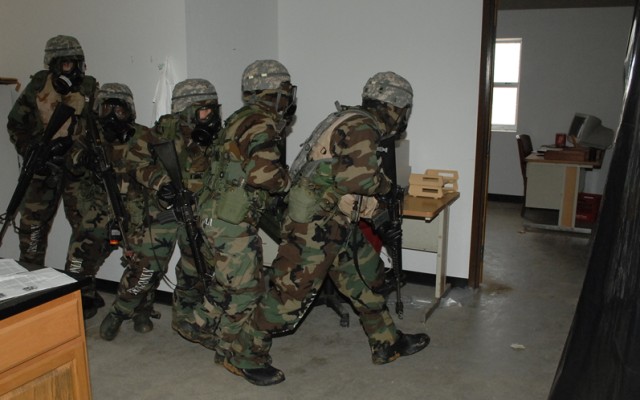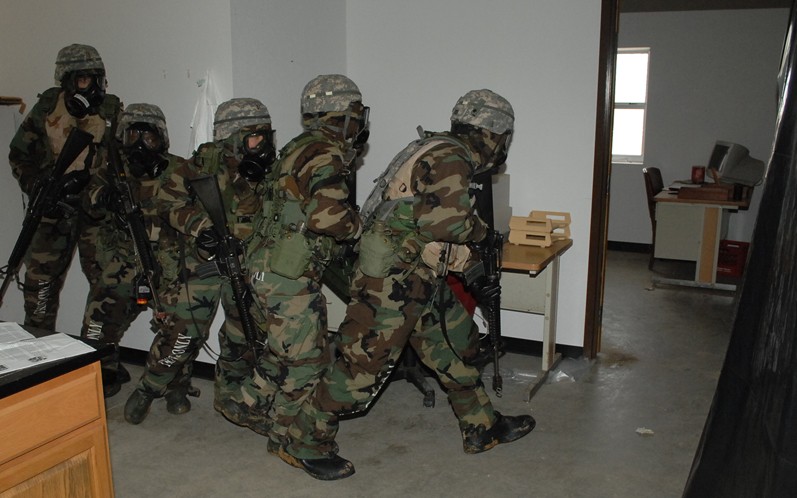FORT LEONARD WOOD, Mo. - Forces Command and Training and Doctrine Command Soldiers teamed up for a combined exercise at Training Area 27A, March 11.
The 763rd Ordnance Company (Explosive Ordnance Disposal) provided services to Chemical Basic Officer Leader Course 01-09, as the group of second lieutenants completed the 14-week course's Field Training Exercise.
The cooperation came at the request of a Chemical, Biological, Radiological and Nuclear School instructor and for three months, the units have cooperated in training.
"We got together, looked over our doctrines to see how we could marry them up and make up practical applications (for training) before the lieutenants actually deploy," said Eric Hanson, CBRN School reconnaissance instructor.
The EOD team acts as an asset for the lieutenants, Hanson said.
"They are going to be tested (in combat) in ways that we can't foresee, but by giving them every imaginable thing - in training - that the bad guys will put them through, will make them better," Hanson said.
Training together has several benefits, Hanson said.
"It saves resources, saves time and it gives the experience of Soldiers who have deployed to our lieutenants," Hanson said.
During the exercise, the incident commander quickly assessed the
situation.
"Our mission is two-fold. We have a suspected terrorist in the area. We have secured this town, and we have a building close to here where we suspect they were making chemical agents. If we come in contact with any explosive devices or booby-trapped areas, EOD will do what they do and mitigate the explosive," said 2nd Lt. George Riley, Chemical BOLC student.
It's important to have EOD on hand, Riley said.
"It's likely when you deal with terrorists that you will come in contact with some kind of explosive device, because it's a crude method of dissemination for chemical agents," Riley said.
As the CBRN Soldiers are training, so is the EOD team, according to Sgt. 1st Class Jason Gerber, 763rd Ordnance Co. (EOD).
"I set up an EOD problem, some (simulated) chemical ordnance. Once they find the chemical ordnance they will call EOD and gather intelligence," said Sgt. 1st Class Jason Gerber, EOD operations noncommissioned officer-in-charge.
The training is just as realistic for EOD as it is for the CBRN officers, Gerber said.
"My team will operate as a normal three-man EOD team would, in a combat zone. They came here and linked up with the lieutenants. They went through the sand table brief with them and they don't know what they are going to encounter down there anymore than the lieutenants do," Gerber said.
Once the lieutenants identify hazards, they will call the EOD team forward the way it would happen in the real world, Gerber said.
"EOD will mitigate the risk whether it's a leak seal-and-package of a chemical round or rendering safe unexploded ordnance. They've got a full set of team gear including a robot," Gerber said.
It makes sense that EOD Soldiers train with CBRN Soldiers, Gerber said.
"Chemical munitions have an explosive component, most of the time," Gerber said.
It's great for EOD, because it can be difficult to find people to train with, Gerber said.
"In three months, all of the feedback I have gotten from my Soldiers and Mr. Hanson has been positive. I think it's working well for both sides," Gerber said.


Social Sharing